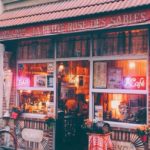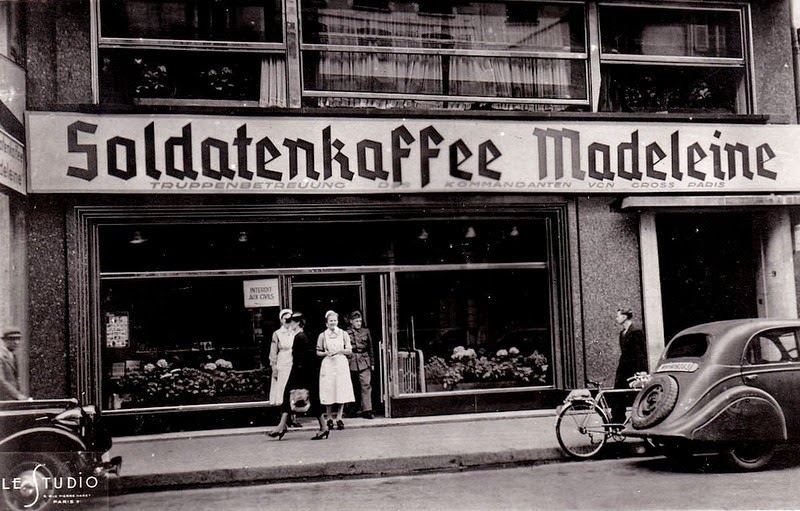
Today I found a photograph of an ordinary German coffee shop circa 1941, with German signage above the windows that read “Soldatenkaffee Madeleine“. What made this photograph of a coffee shop so very unordinary, was that it was not taken in Germany, but on the Place de la Madeleine in Paris during the Nazi occupation. How many other places like this were there in Paris? How many have I been to, blissfully unaware of their history? Was my regular café a former Nazi-occupied Soldatenkaffee?
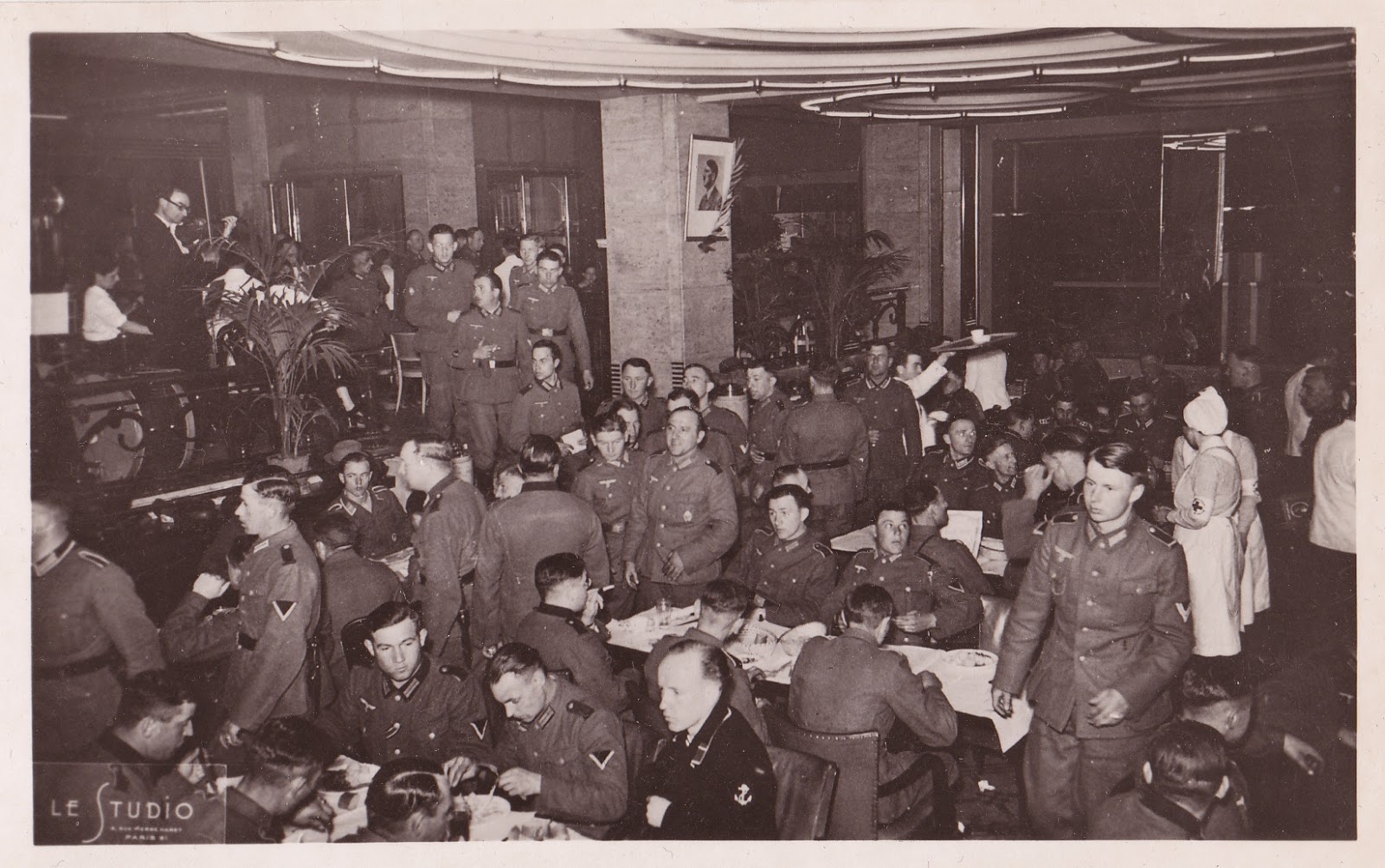
(c) Occupation-de-paris.com
Of course, they were all across the city. Cafés, restaurants, theatres, bookshops, general stores, sporting facilities, medical clinics and even brothels that once served as official Third Reich stomping grounds where swastika insignias hung above the door and welcomed the darkest enemy in modern history.
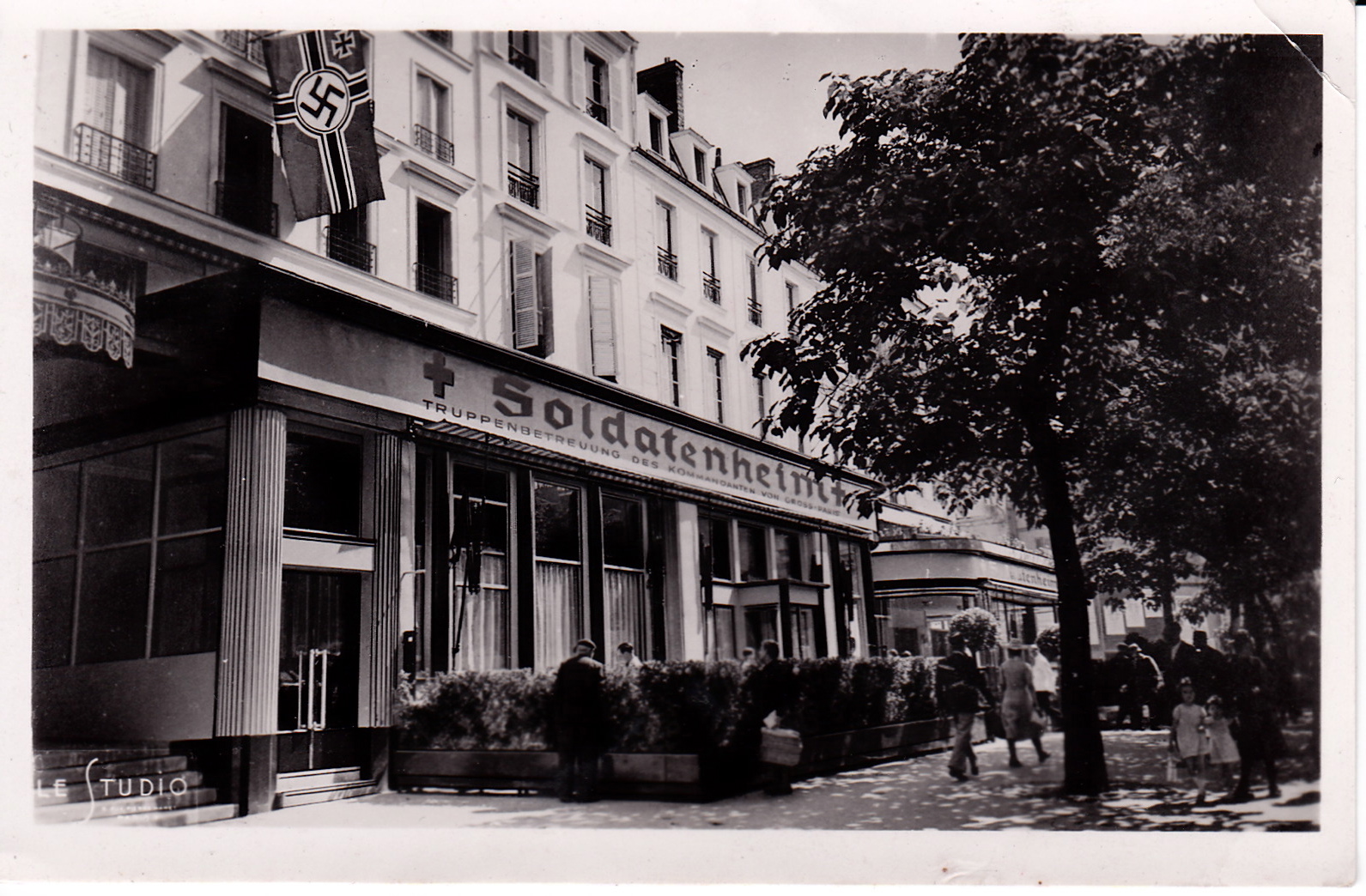
(c) Occupation-de-paris.com
A Nazi-occupied restaurant on the Grands Boulevards (source)
The Nazi occupation of Paris is a period in history that fascinates me endlessly. Most of the imagery we see from this time consists of German tanks symbolically rolling down the Champs Elysées, Nazi dignitaries inspecting the major landmarks and soldiers on duty, ceremoniously marching up the boulevards. But there’s something even more chilling about seeing Nazi soldiers off-duty, enjoying the simple pleasures of Paris and making themselves at home.
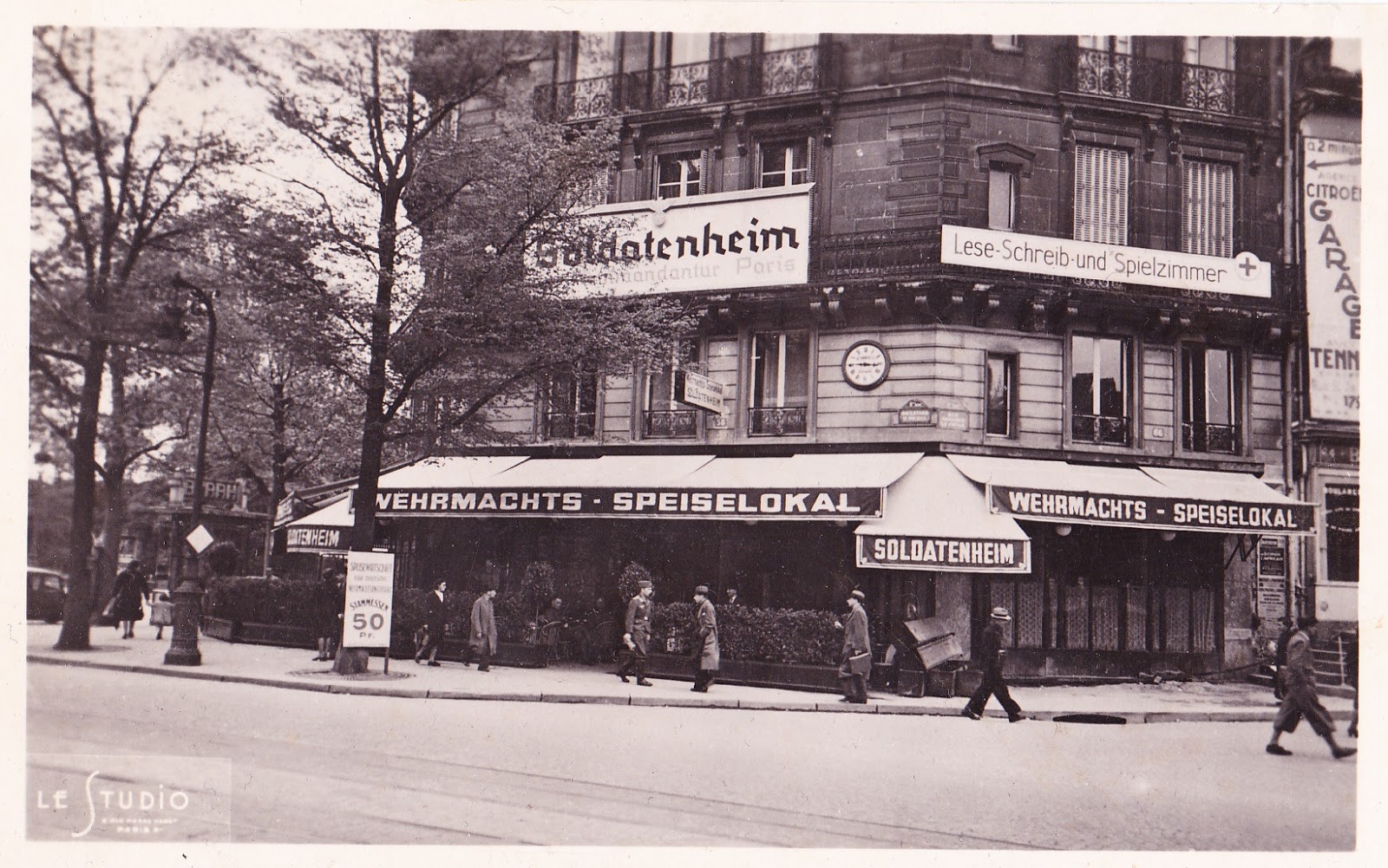
(c) Occupation-de-paris.com
A Soldatenheim, literally ‘soldier home’, on Place Saint-Michel in the 6th arrondissement
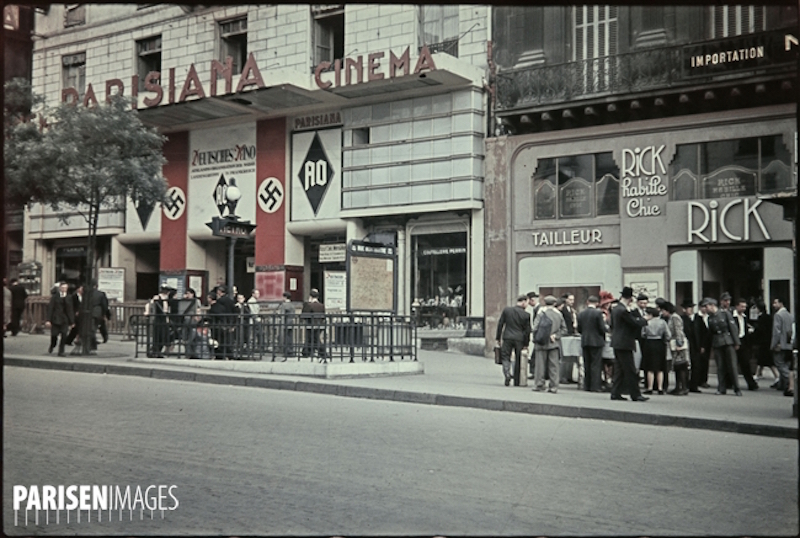
The old Parisiana cinema under Nazi occuption, photographed by André Zucca, Bibliothëque Historique de la Ville de Paris.
It turns out German soldiers even had tourist maps, leaflets and guides to help them locate reliable places of entertainment under German supervision, specifying which cafés, cinemas and brothels could be visited where they would not be exposed to the disruptive effect of contact with the local population.
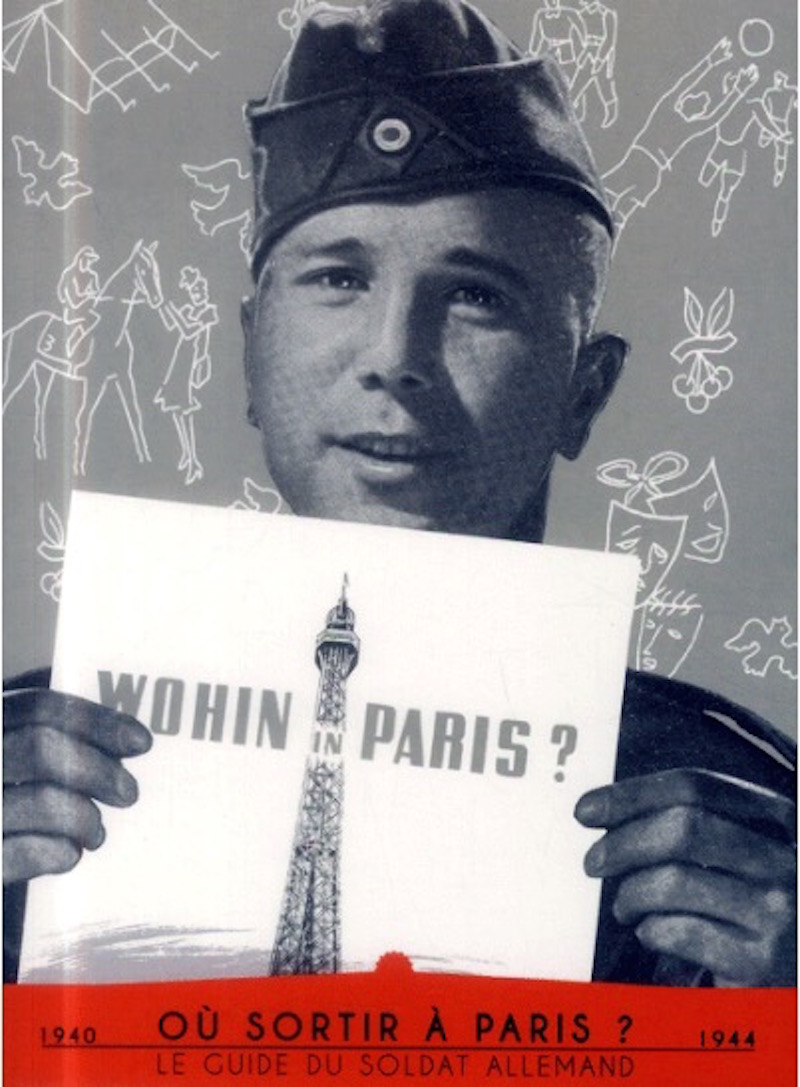
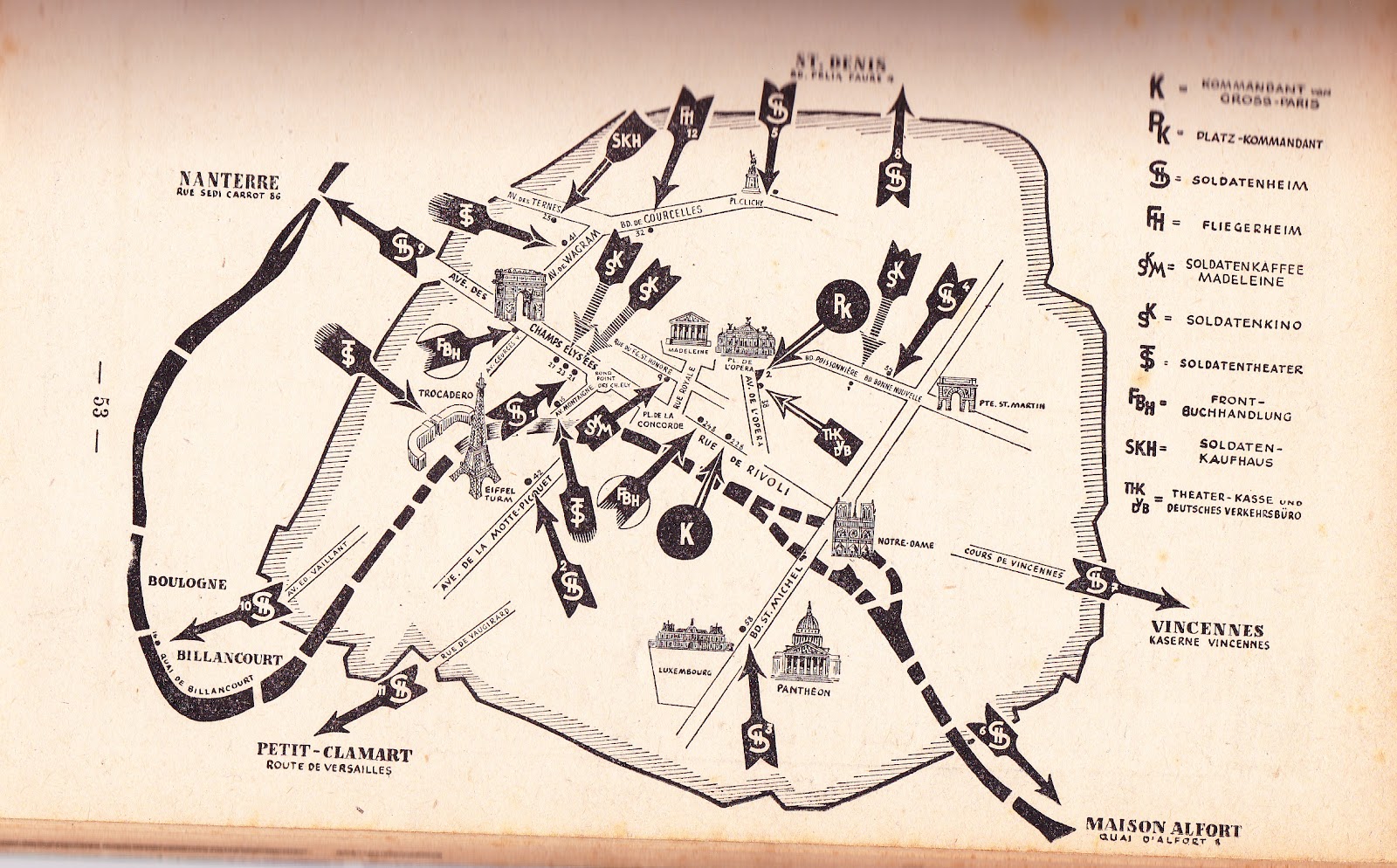
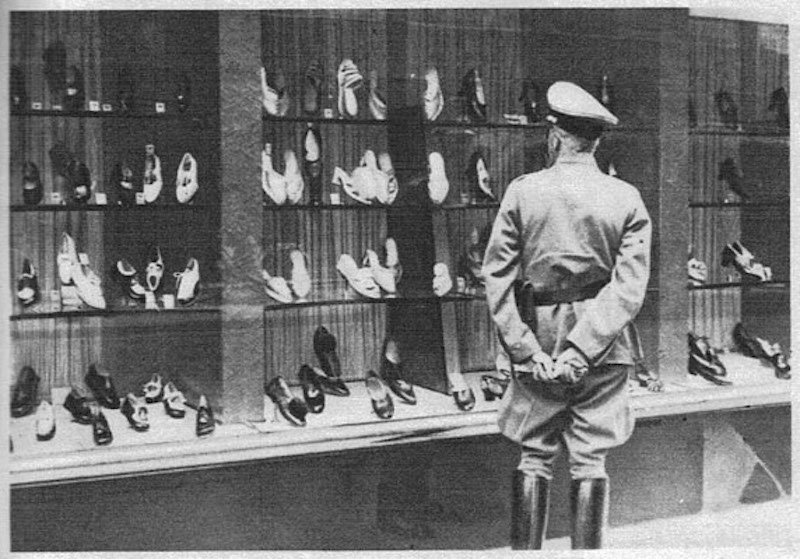

(c) Occupation-de-paris.com
(source)
Above is a scan from a German guide. The top of the page says “Important for Soldiers” and lists locations in Paris for various categories from administrative offices to leisure addresses. There were a few things that caught my eye.
Under “Gaststatten fur Reichsdeutsche”, restaurants for the German Reich, the iconic brasserie La Coupole is listed.
“Soldatenkinos”, literally, soldier cinemas, includes the Marignan and Rex cinemas, still two of the most popular venues to watch a film in the city today.
“Besichtigungsgruppen”: Sightseeing groups
“Frontbuchhandlungen”: bookstores
“Soldatenkaufhaus”: roughly translates to a soldier’s general store. I checked the location on Google streetview, it’s now a Monoprix supermarket.
“Atelier für Künstier”: Atelier/ workshop for artists, which sites the location as 14 Rue de la Grande-Chaumière, a prestigious art school in the 6th arrondissement that still stands today with its original facade.
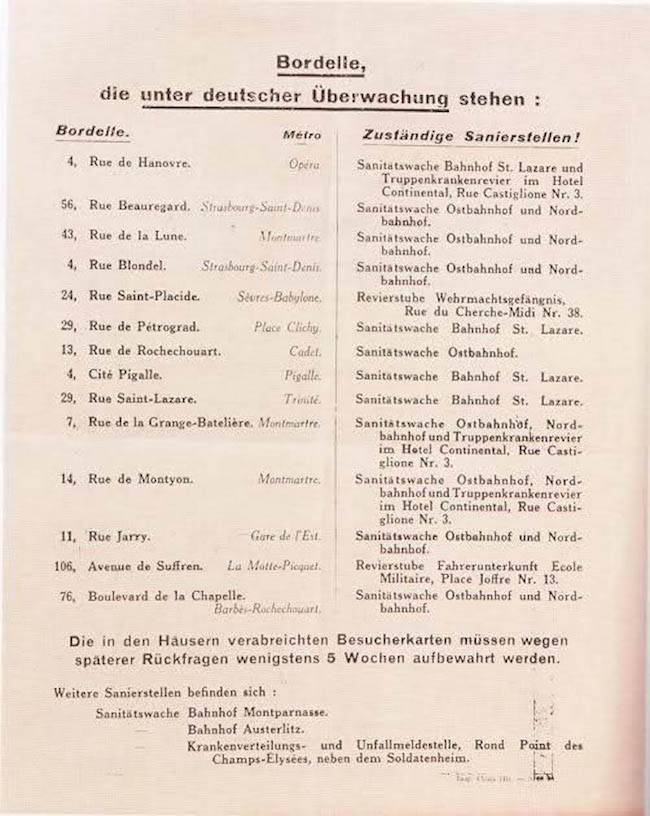
(c) Occupation-de-paris.com
(source)
This is a list of Paris brothels– “bordelle”, under German control, listing their addresses in the left column and in the right column, under “Zustandige Saniestellen”, encouraging the practice of safe sex, is a list of health clinics.
I looked up a few of the addresses on Google Streetview to see what they are today:
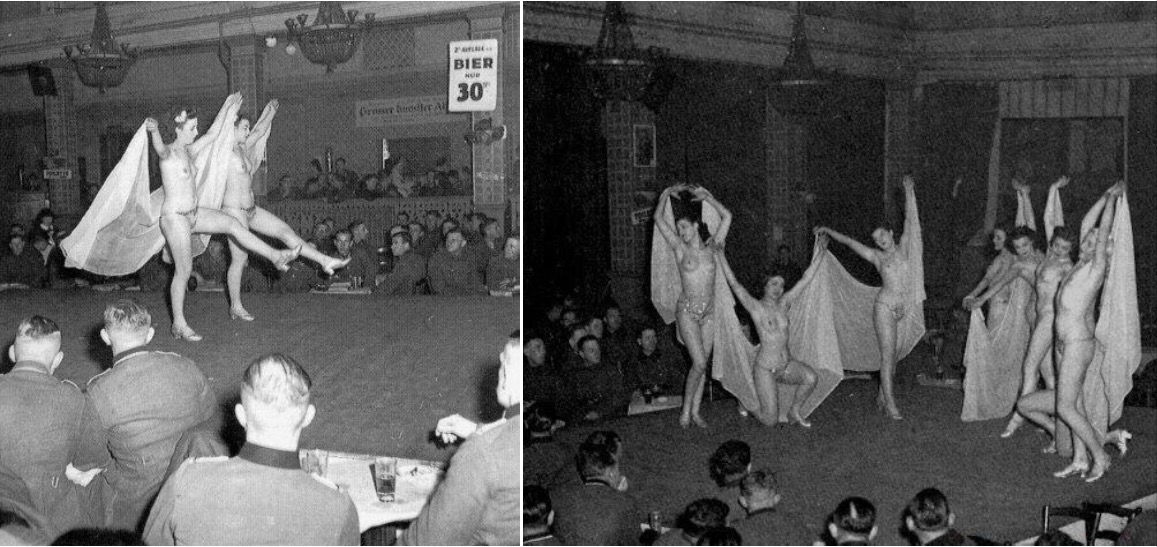
German soldiers enjoying a French cabaret performance
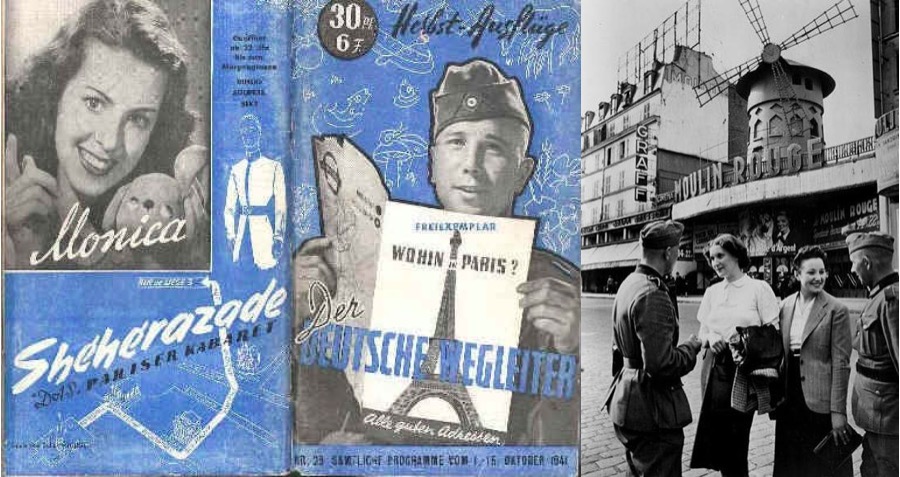
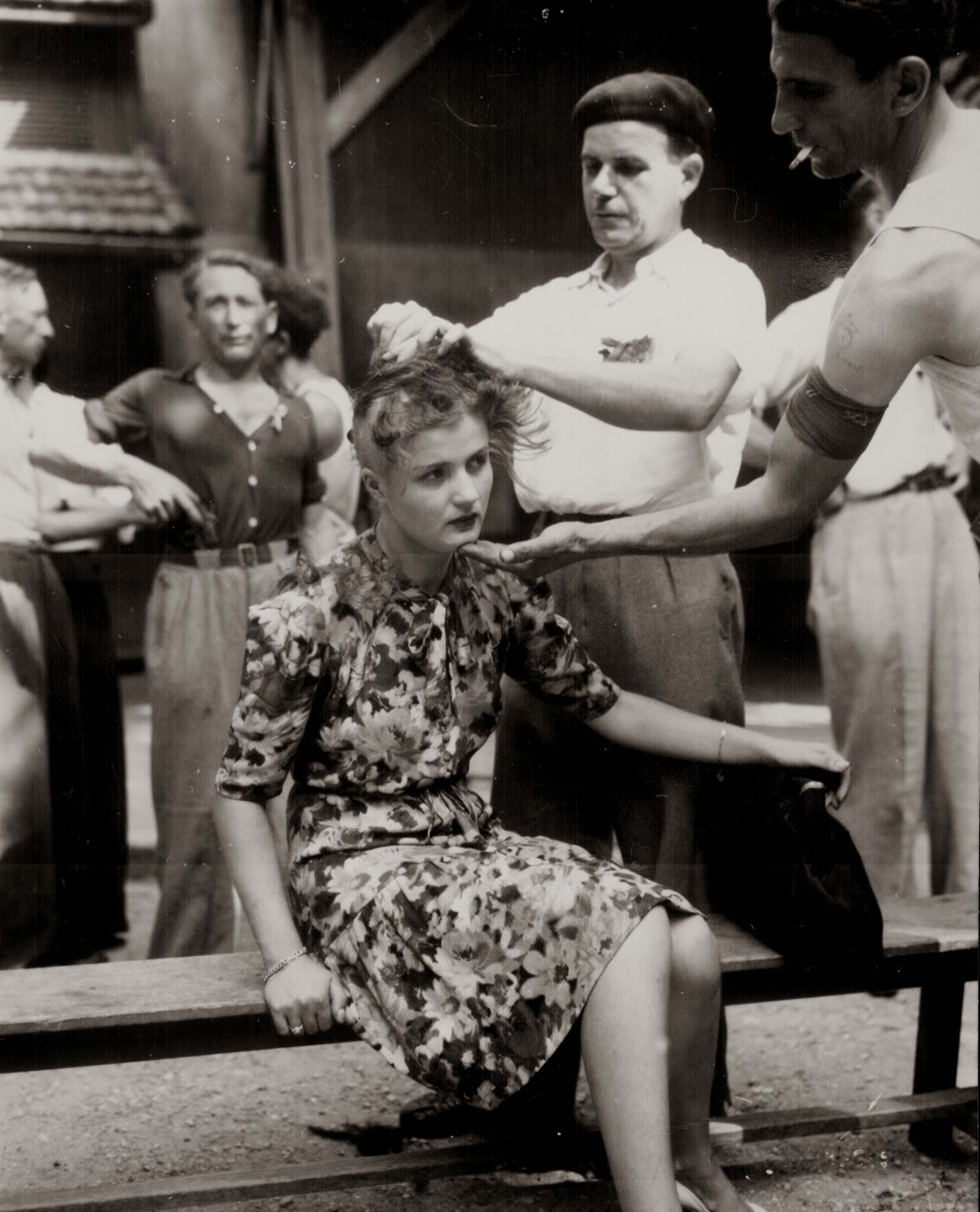
A French woman, believe to be a prostitute, has her head shaved by civilians as a penalty for having consorted with German troops.
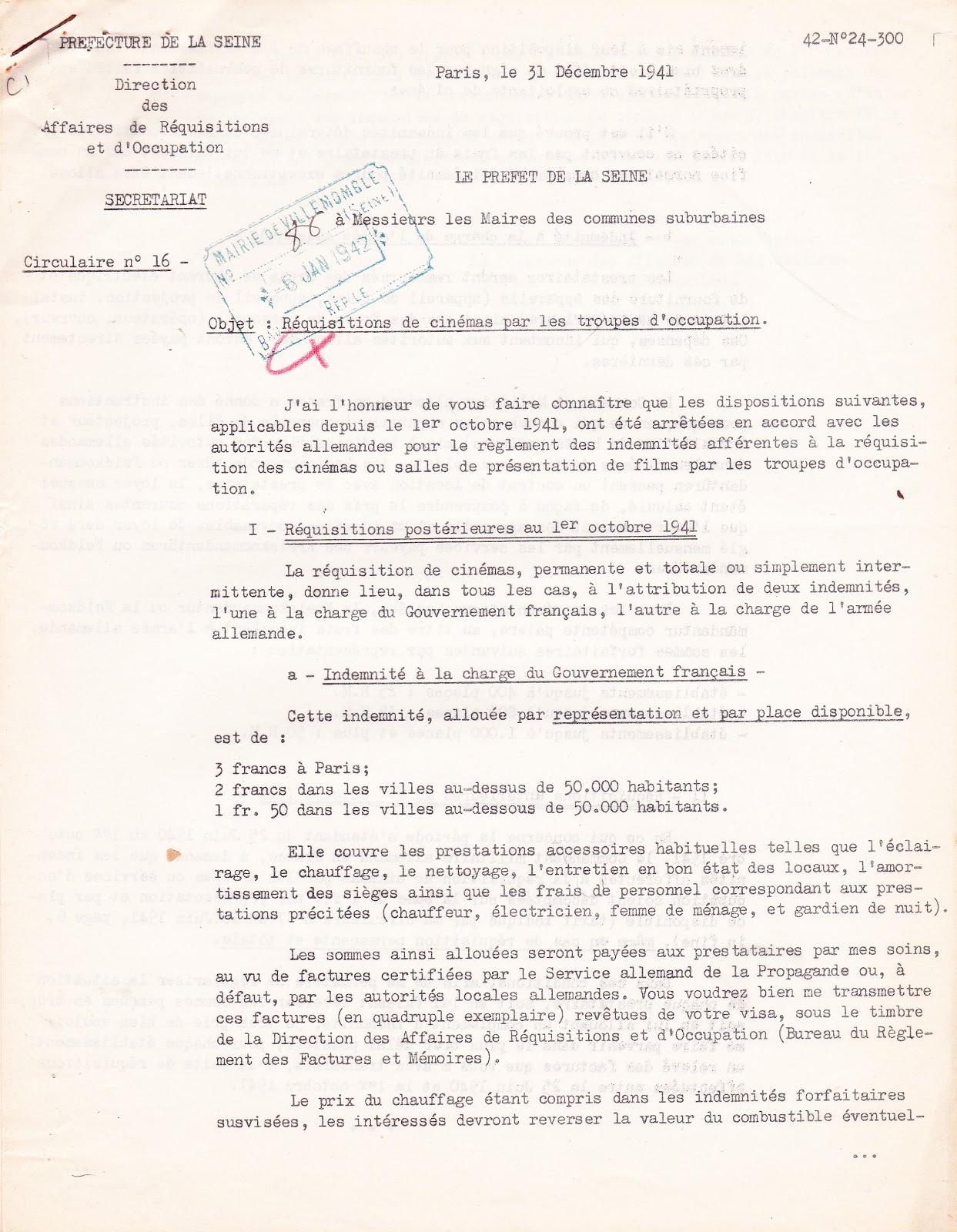
(c) Occupation-de-paris.com
(source)
I found this document interesting too ↑ written by the Paris prefecture outlining in 1941 how Parisian cinemas will be permanently handed over to the occupying German troops, in exchange for 3 Francs per seat given to the cinema owners, paid for by the French government.
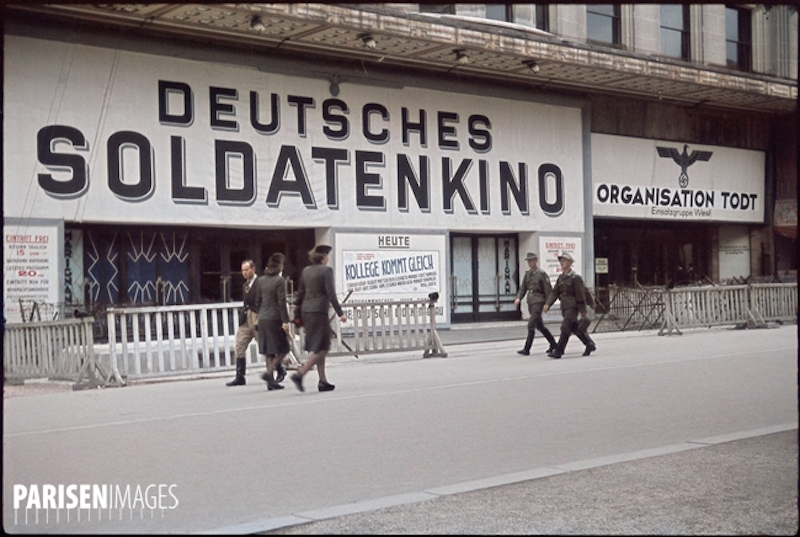
Cinema on the Champs Elysées
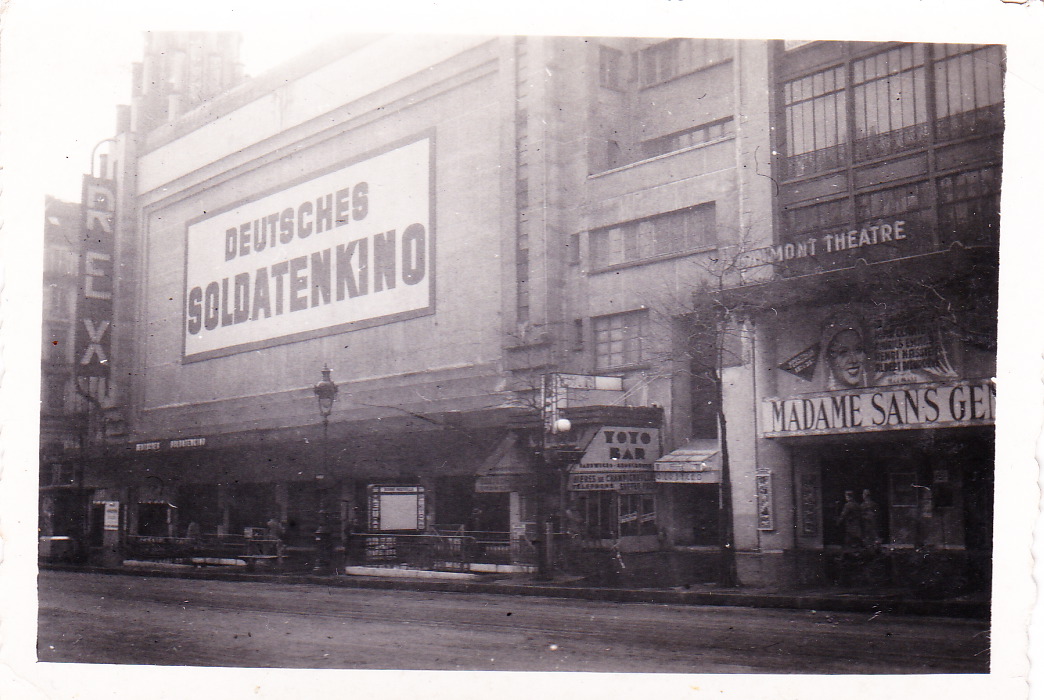
The Rex Cinéma on the Grands Boulevards
The city of Paris has a fascinating collection of colour and black & white photographs of everyday life in Paris during the occupation. I scrolled through all 90 pages for you and picked out some of the most haunting images…
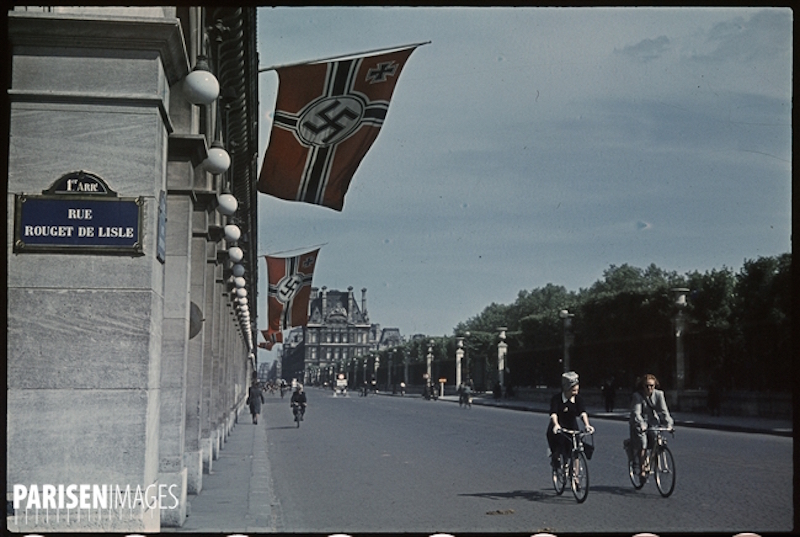
Rue de Rivoli
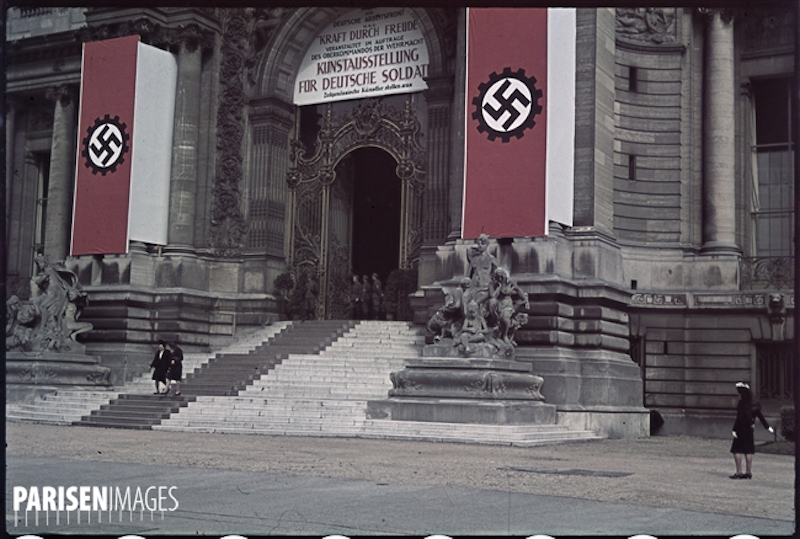
Le Petit Palais Museum
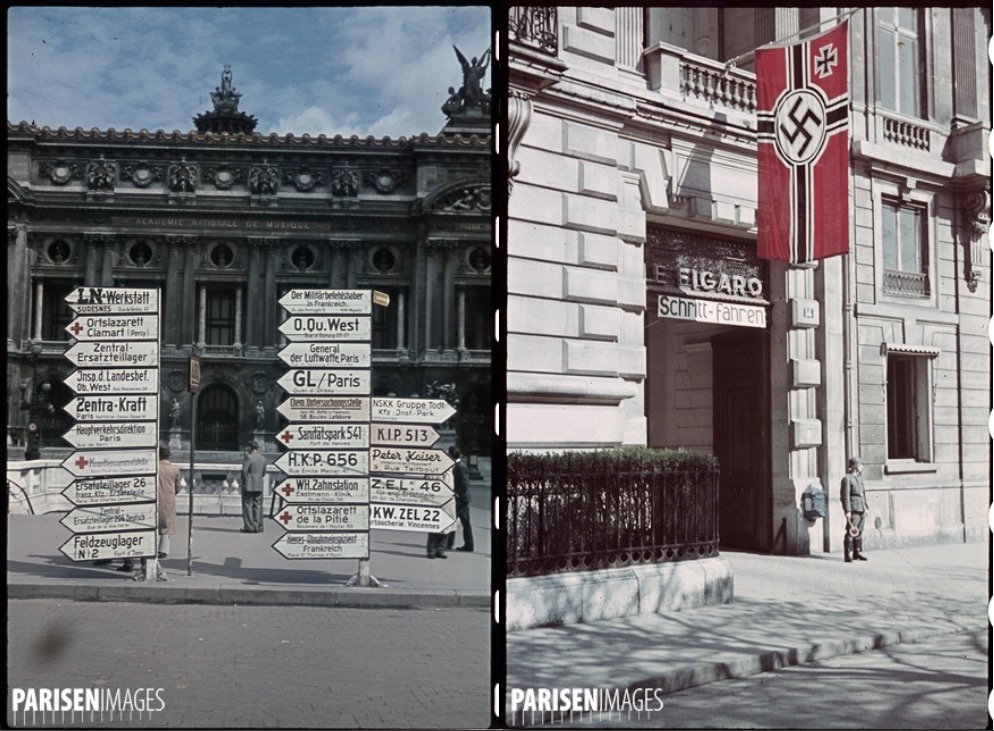
Left: German street signs, Right: The Nazi flag over the French newspaper, Le Figaro.
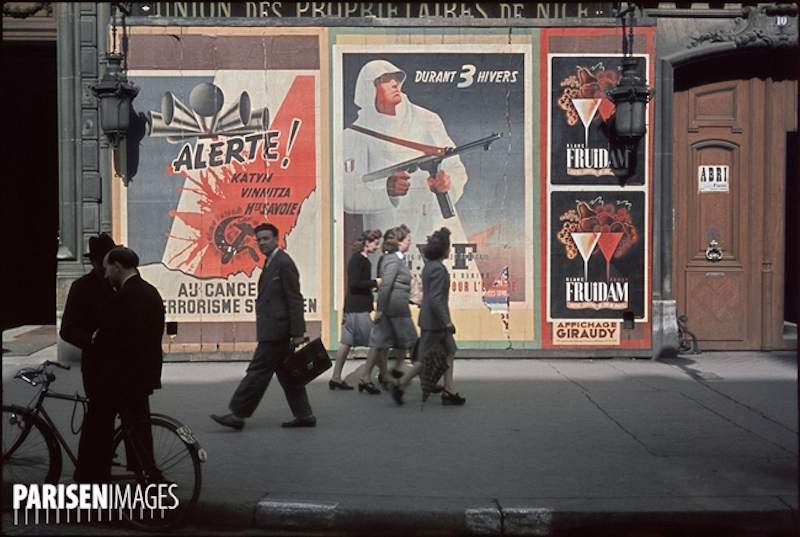
Propaganda against the “cancer” of communist terrorism.
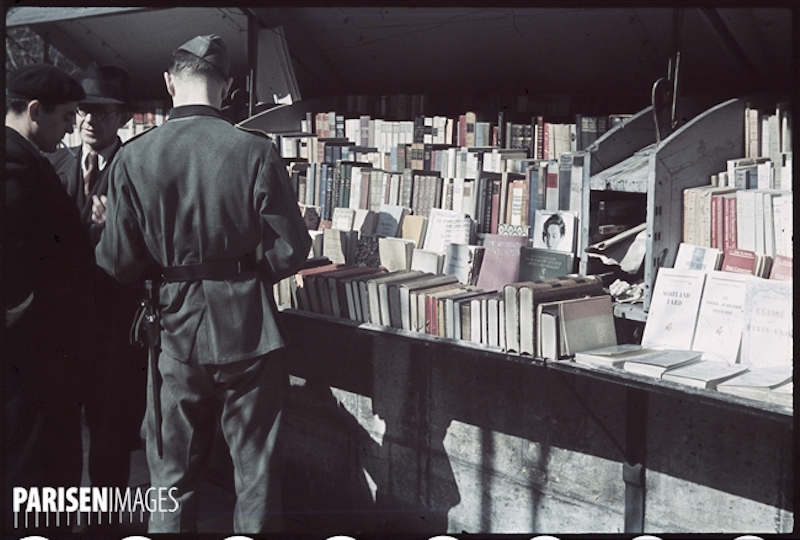
A Nazi soldier browsing the bouquinistes
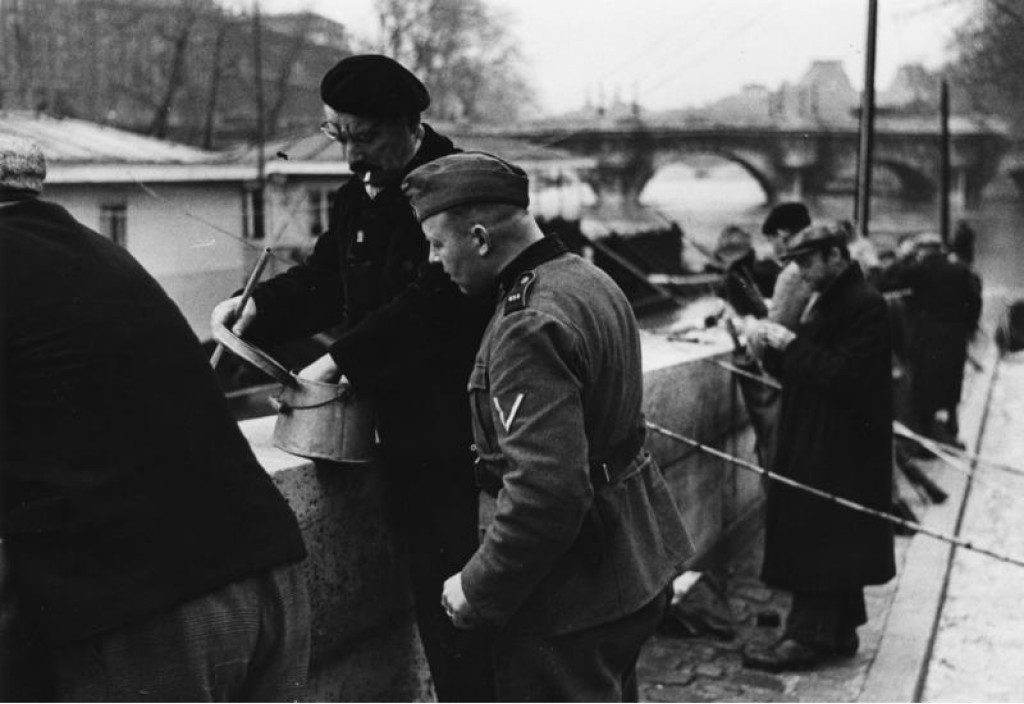
Soldier learning how to the locals fish in the city
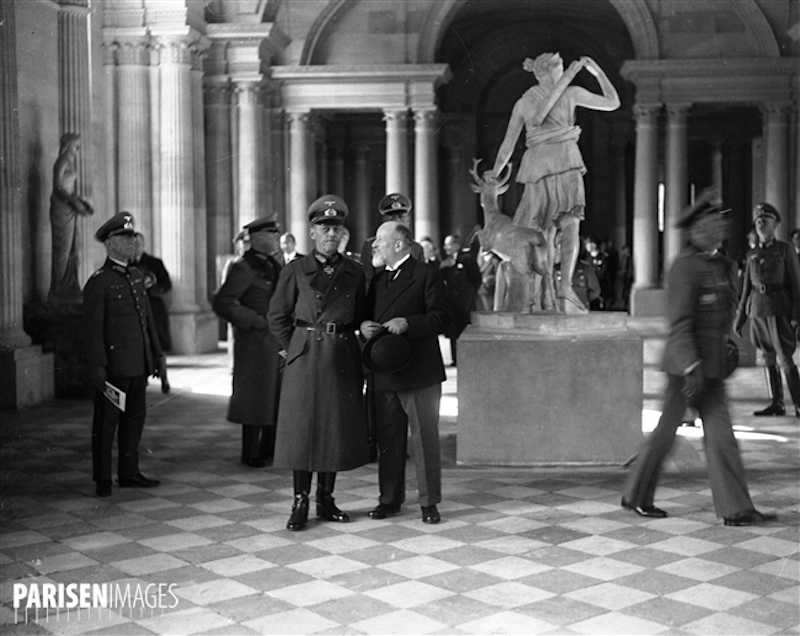
Visiting the Louvre
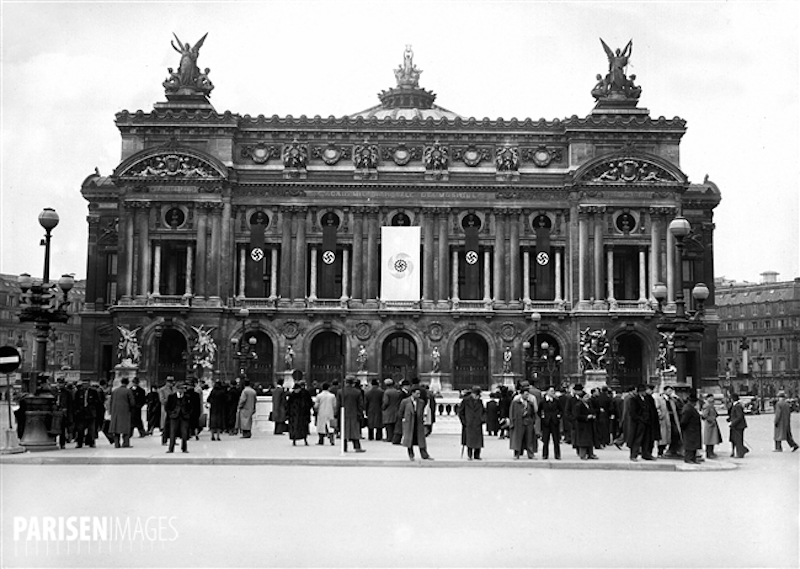
At the Opera House
Do you recognise any of your favourite Paris hangouts?
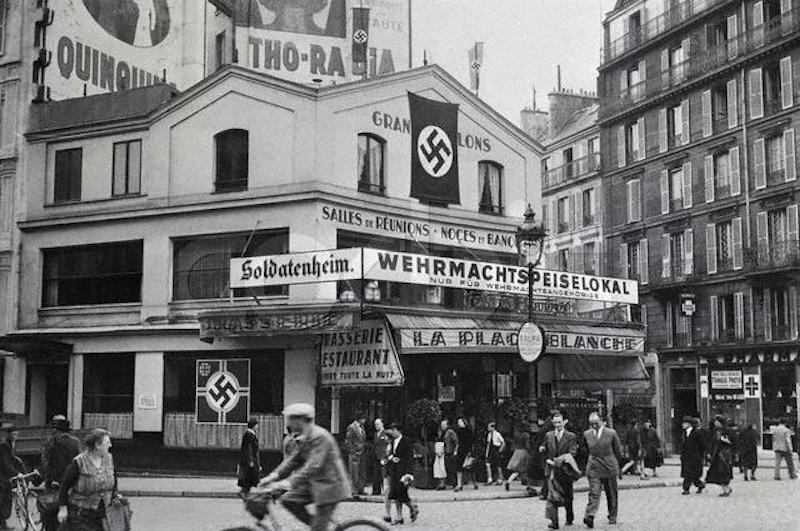
Place Blanche
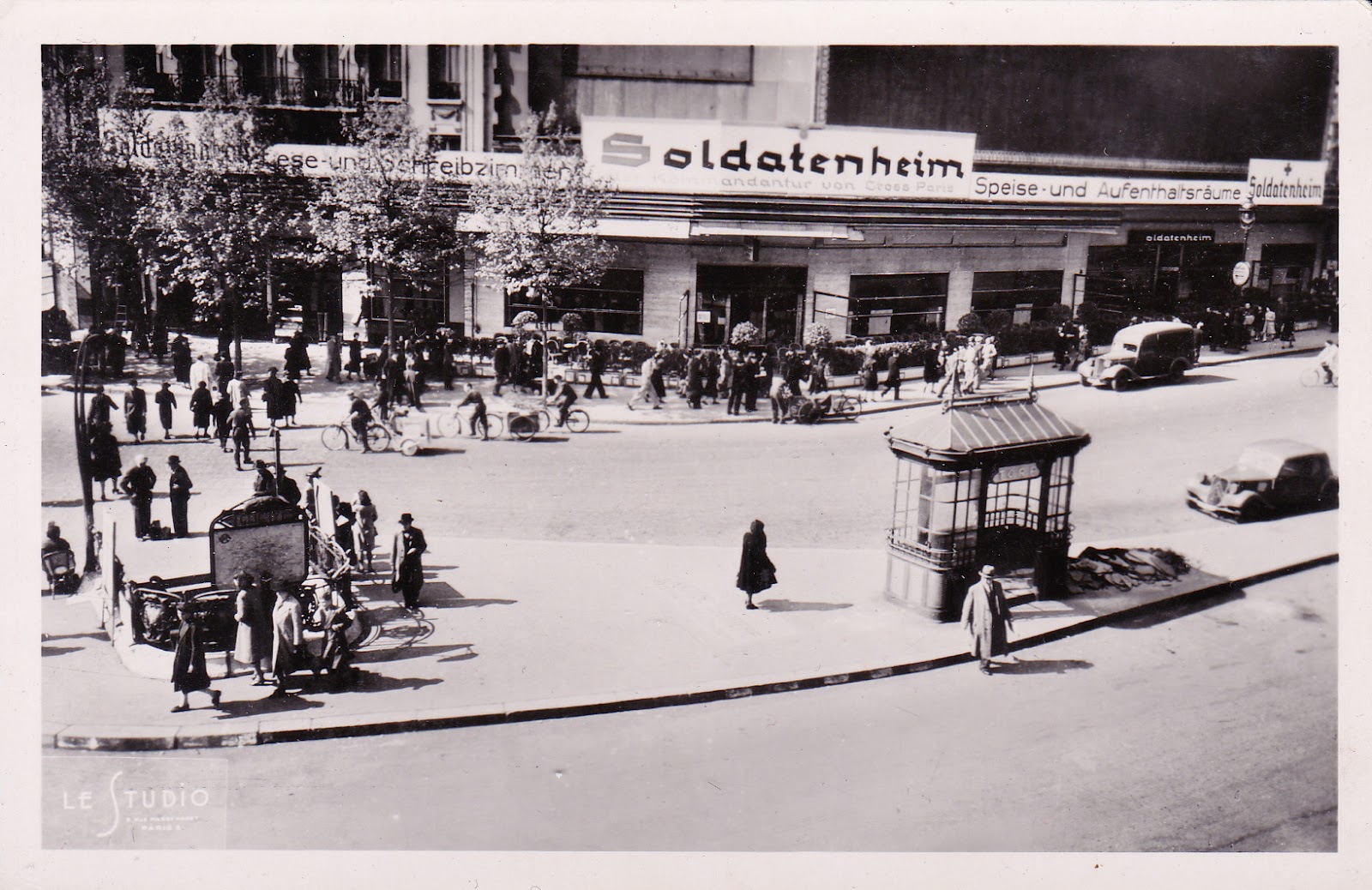
(c) Occupation-de-paris.com
Place de Clichy
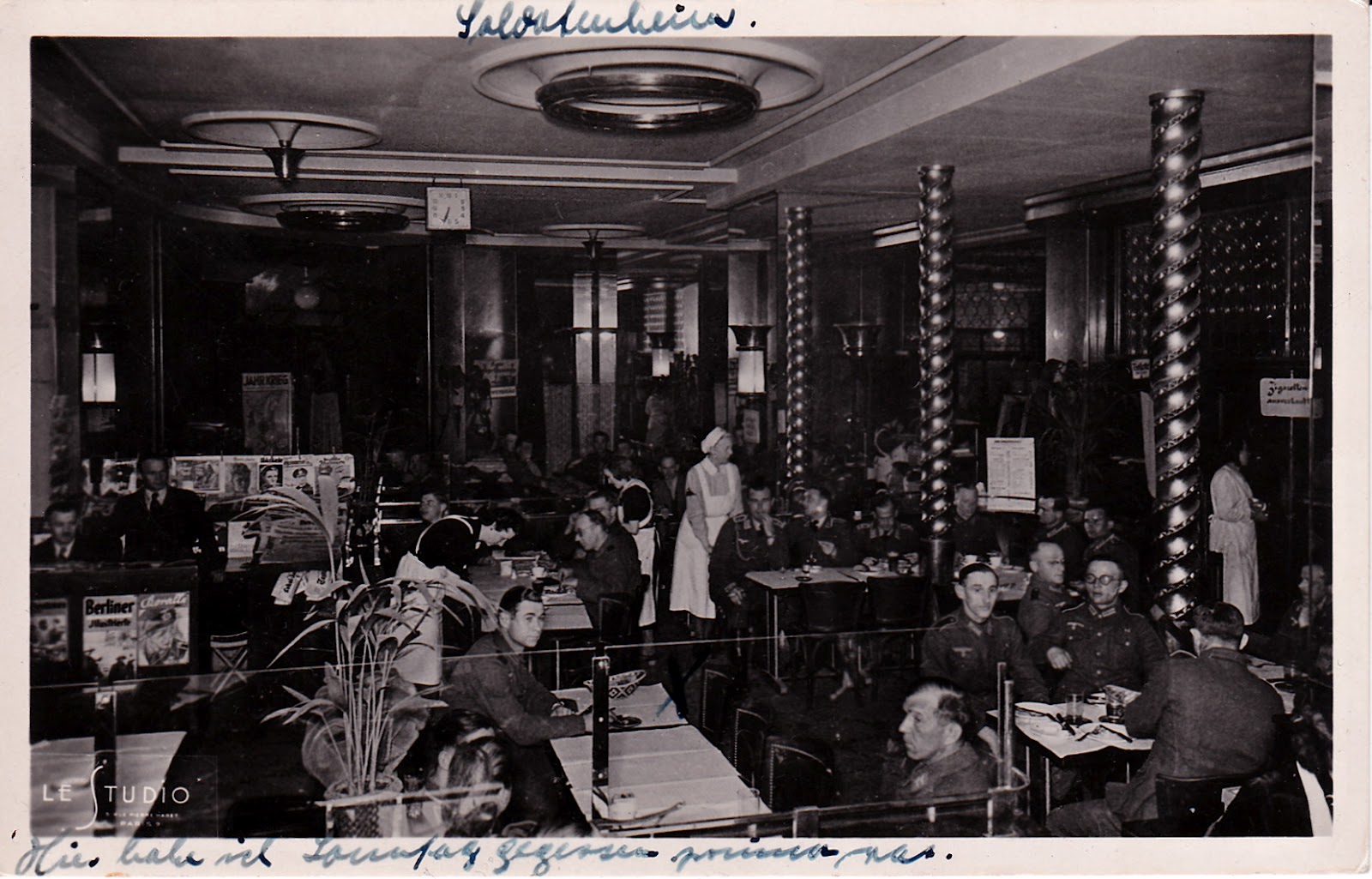
(c) Occupation-de-paris.com
Location unknown
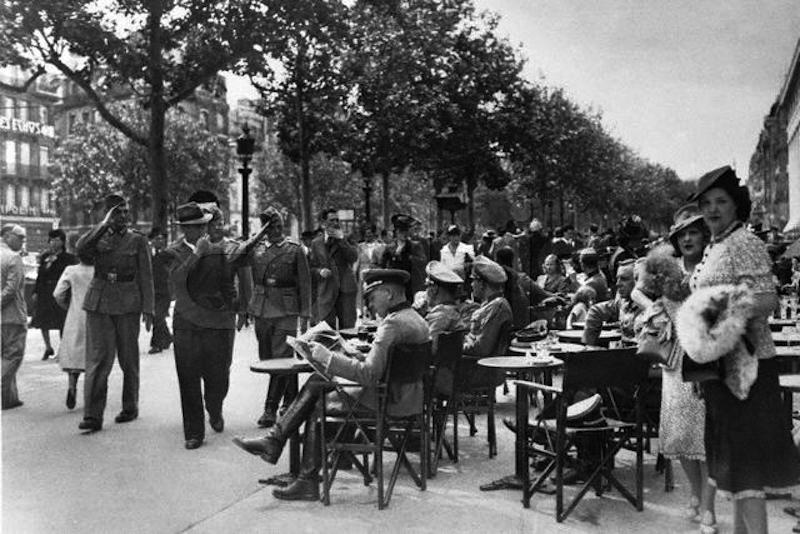
Champs Elysées
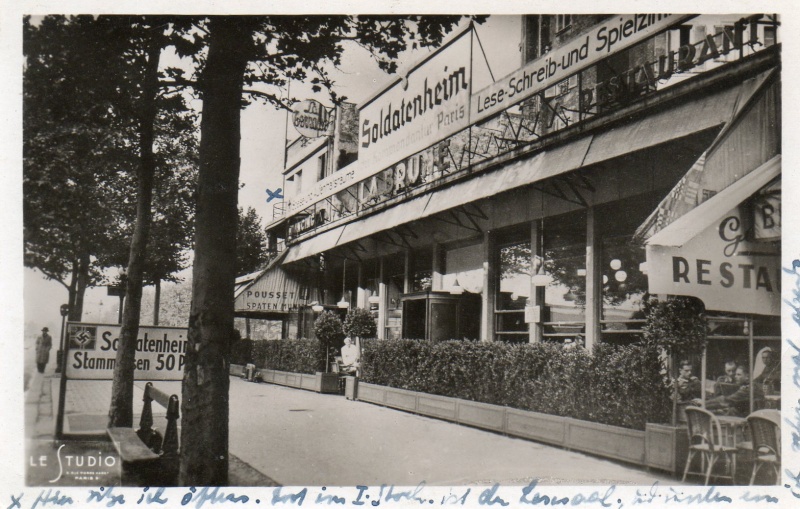
(c) Occupation-de-paris.com
A café formerly known as La Brune
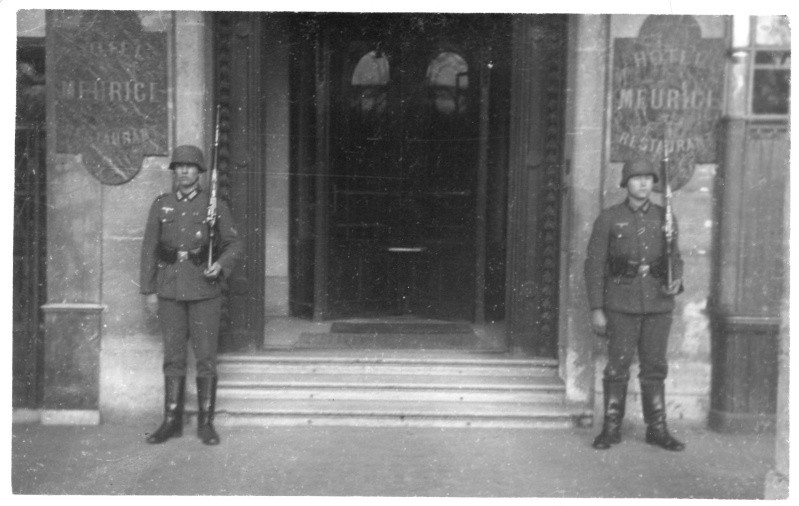
(c) Occupation-de-paris.com
Le Meurice Hotel
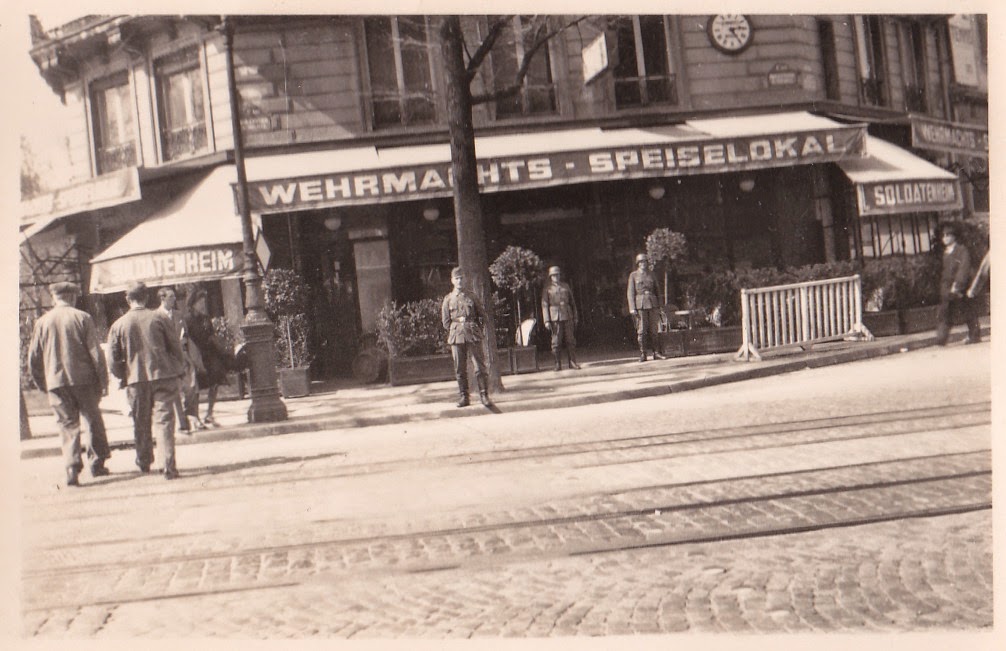
(c) Occupation-de-paris.com
Saint Michel
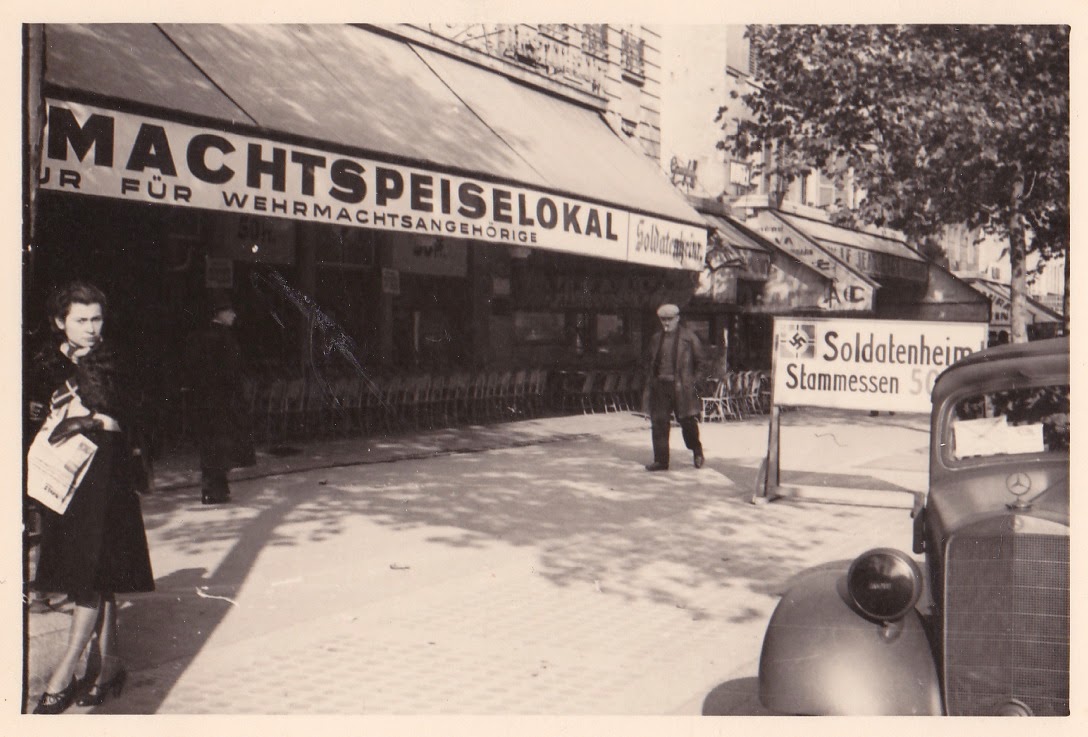
(c) Occupation-de-paris.com
Grands Boulevards
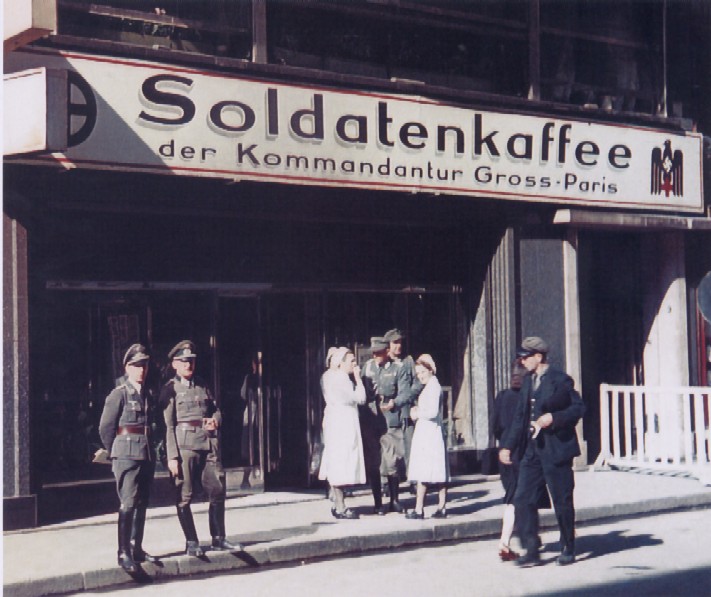
Location in Paris unknown
Indonesia’s Soldatenkaffee
While researching this article and Google searching for “soldatenkaffee”, I came across something a little disturbing…
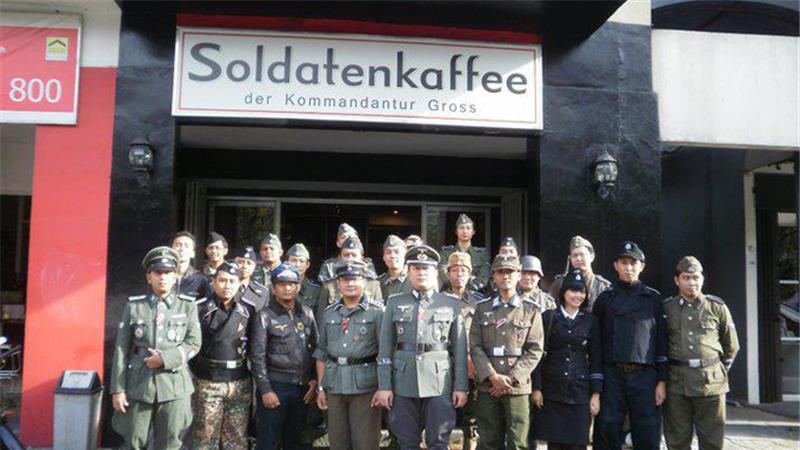
This is the Soldatenkaffe, a café featuring nazi decoration and memorabilia. In 2013, it was briefly closed down due to criticism from international media, but later reopened in 2014. The owner claimed that his establishment “was never aimed to promote nazi ideology explaining that Nazism was only seen from an historical perspective in Indonesia”. Indeed, there is an entire Wikipedia page dedicated to something known as “Nazi chic“, essentially the approving use of Nazi-era style, imagery, and paraphernalia in clothing and popular culture. It’s particularly popular in Asia.
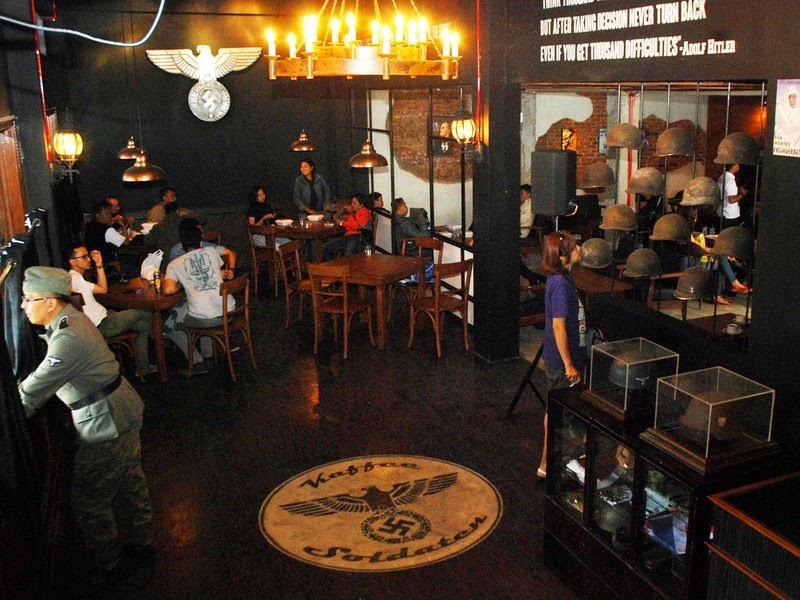
According to the Wikipedia page, “In some parts of the world, World War II is not taught in schools as a battle of political ideologies, but as a conventional war. This type of education treats Hitler and the Nazi Party as charismatic and powerful leaders of countries during wartime, instead of war criminals as elsewhere…some Japanese believe themselves to be the master race of the East.”
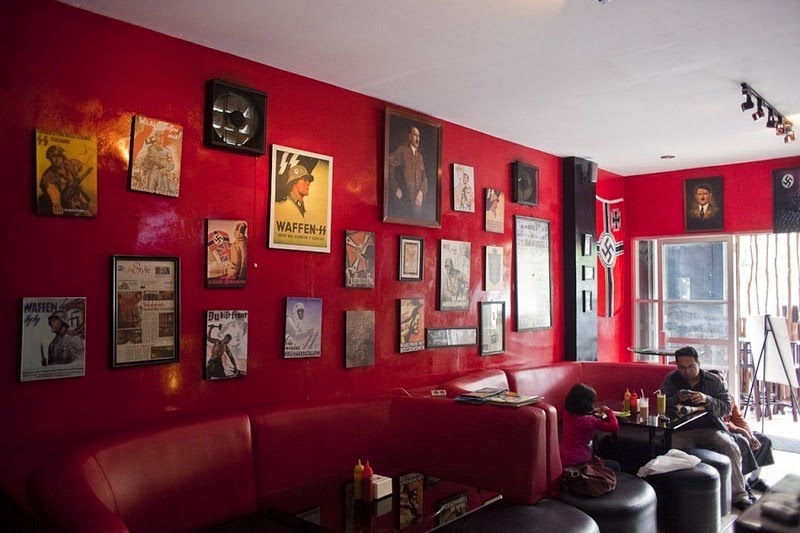
via Amusing Planet
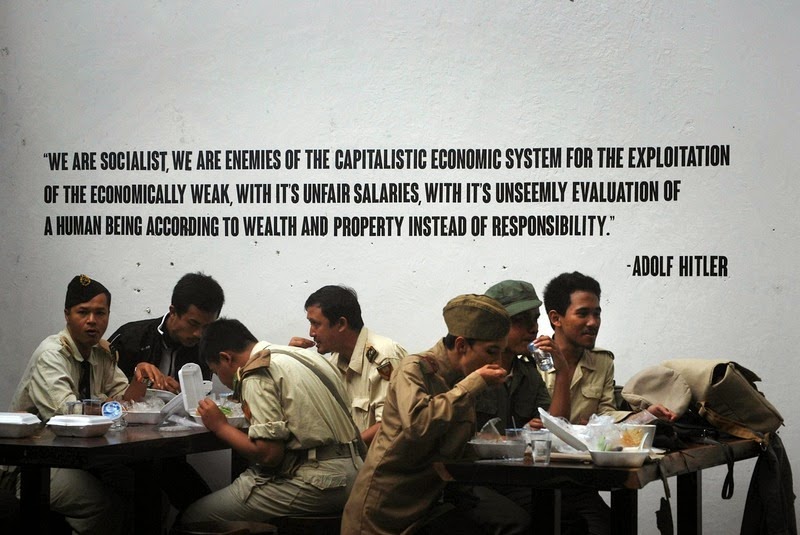
Looks like these customers could use a history lesson or two.


